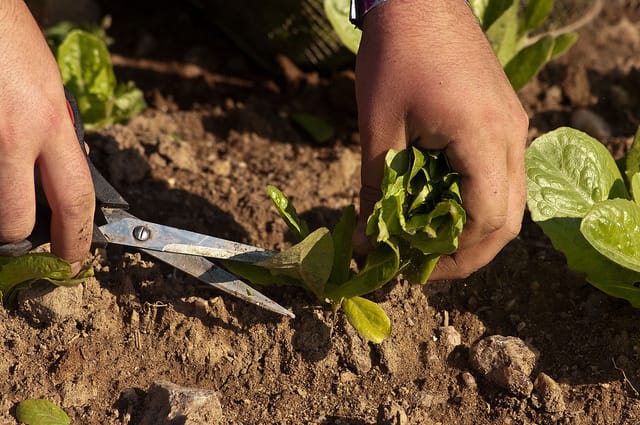Cornucopia’s Take: During the public input phase regarding the Food Safety Modernization Act of 2011, Cornucopia and many other groups told the FDA their proposed rule would be more costly for small and medium size farmers. We also noted that the mountains of manure building up on livestock factory farms pose a greater risk to public health than the manure from smaller farms with healthier animals. The FDA did not choose a scaled and risk-based approach, and, as predicted, most family farmers are shouldering an unfair burden.
Produce safety rule will weigh heaviest on small growers
Food & Environment Reporting Network
by Chuck Abbott
 |
The smallest fruit and vegetable growers will pay comparatively more than big operators to comply with the so-called Produce Rule from the FDA — as much as 6.8 percent of their sales compared with less than 1 percent for big farmers, said three USDA economists on Wednesday. Similarly, the burden will be lower, in percentage terms, for the major produce-growing states because farmers there will be able to spread compliance costs across a larger volume of commodities, they said in a report.
The FDA has estimated that the cost of compliance with its Produce Rule for U.S. growers will be $368 million over 10 years. The rule flows from the 2011 Food Safety Modernization Act, which requires facilities to take steps to prevent food contamination. The Produce Rule calls for such steps as testing water supplies for bacteria, carefully managing the use of manure as a fertilizer, preventing the contamination of fields by wild animals, and training workers in hygienic practices.
“The many fixed costs … cause compliance costs to be higher as a share of revenue for smaller farms,” said the Economic Research Service report. “The findings of this study may have implications for understanding future competitiveness of smaller farms and markets for locally grown fruits and vegetables.”
According to the report, very small farms covered by the Produce Rule would pay an average of $5,560 a year in compliance costs, while the largest fully regulated farms would pay $37,115 a year — nearly seven times as much. The difference in sales volume between the farms, however, is much greater. The USDA classifies “very small” farms as having sales of $25,000 to $250,000 annually, while the largest farms have sales topping $3.45 million — 14 times as much. Those large farms account for nearly 60 percent of farm produce sales.
Farms with sales of at least $500,000 a year account for 86 percent of all fruit and vegetable sales.
Just as it estimated the average compliance cost for various sizes of farms and by state, the USDA report estimated the average cost of compliance for 17 commonly consumed vegetables and 18 popular fruits. Romaine lettuce had the lowest compliance cost among vegetables, at an additional 0.31 percent, and honeydew melons had the lowest cost among fruit, at an additional 0.7 percent.
For the study, USDA economists used the FDA estimate of the 10-year cost of compliance with the Produce Rule and used data from the 2012 Census of Agriculture to estimate the cost of compliance for farms in each sales group. With that estimate in hand, they calculated the likely cost of compliance by state and county for each sales category and for each type of fruit and vegetable grown.

